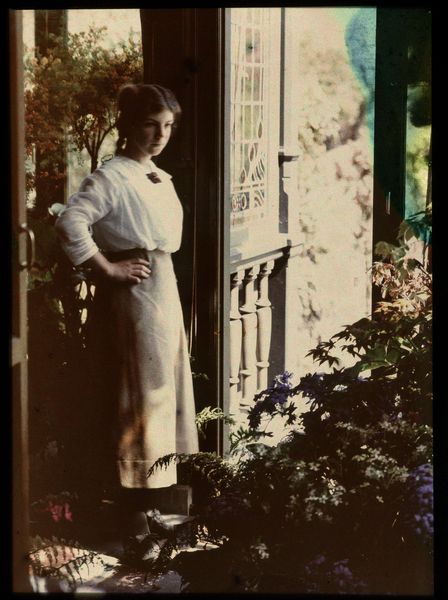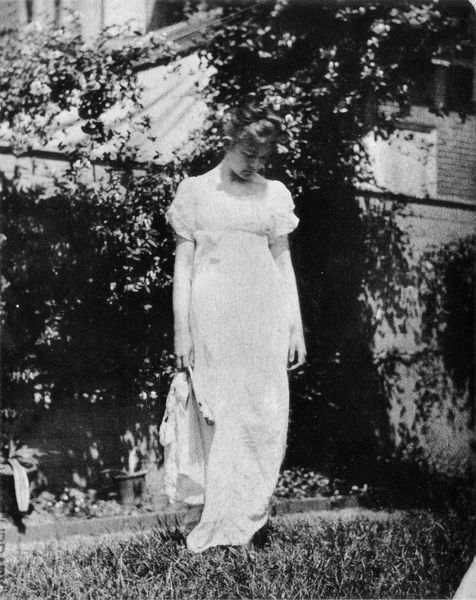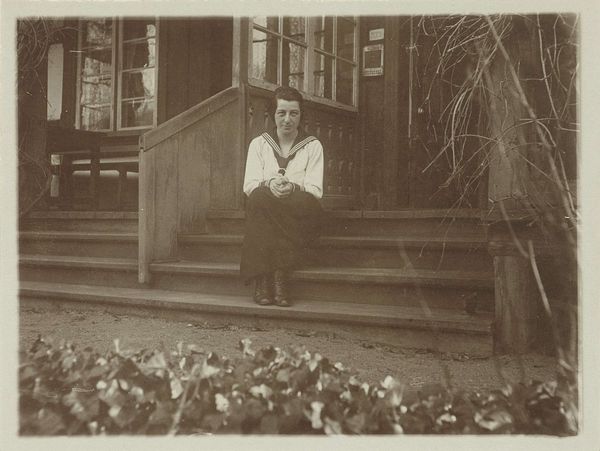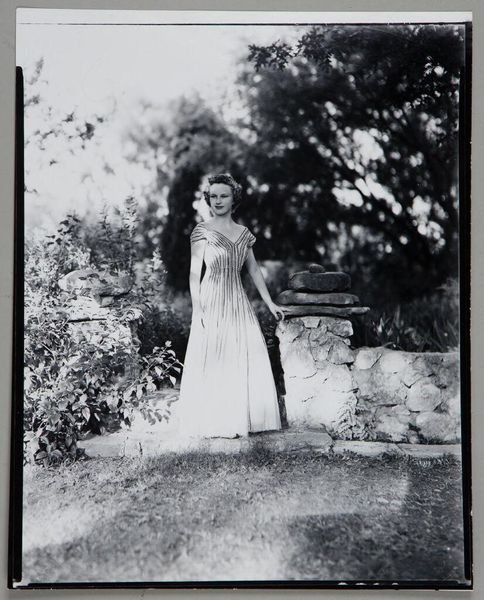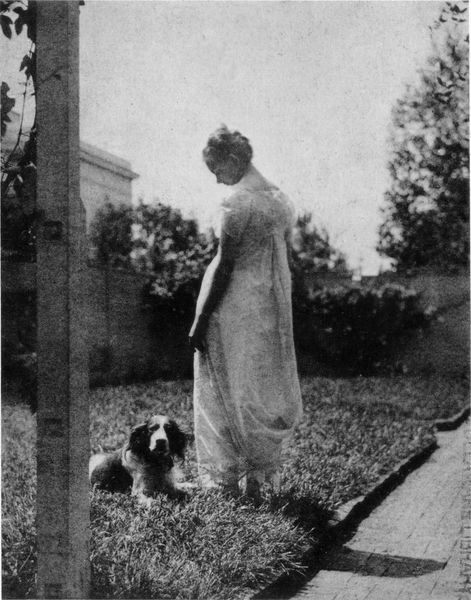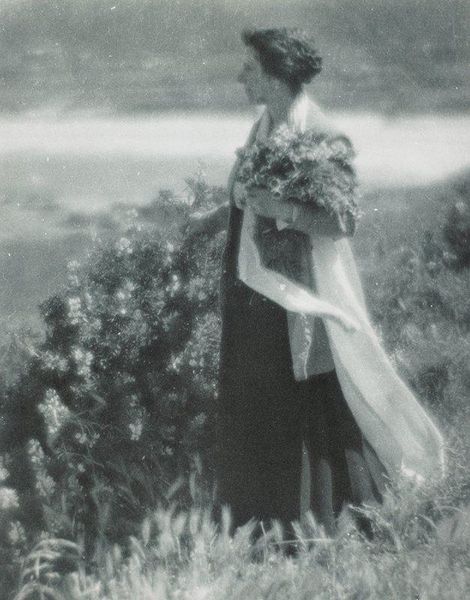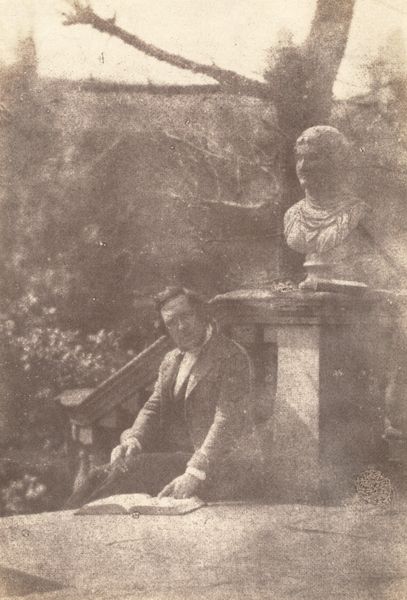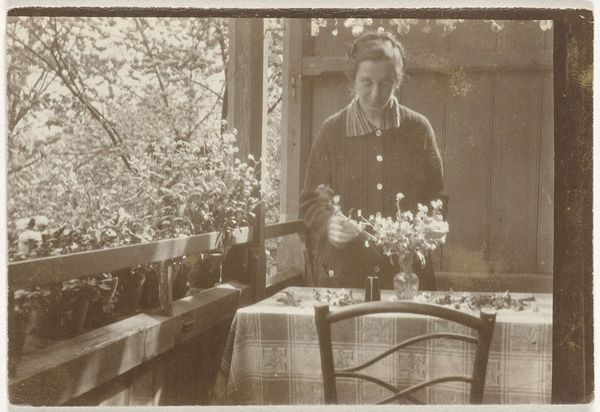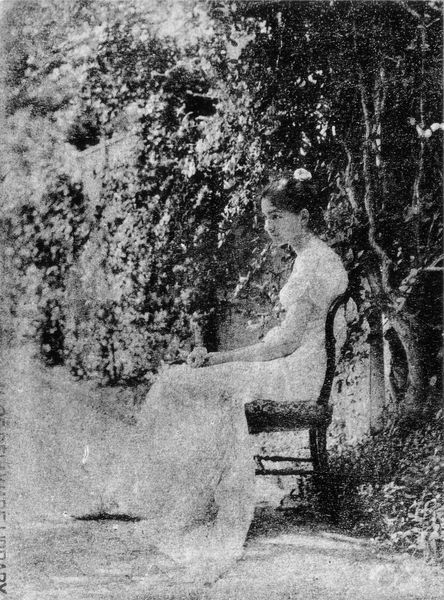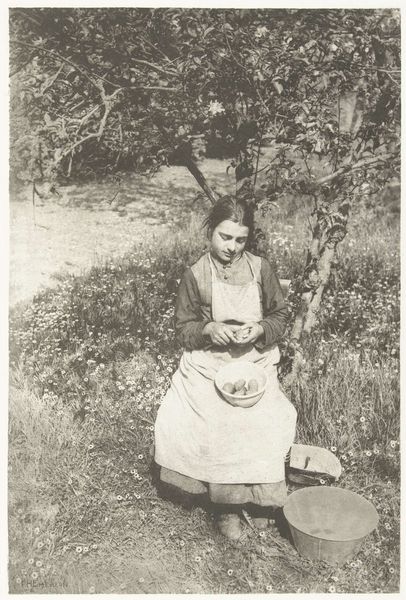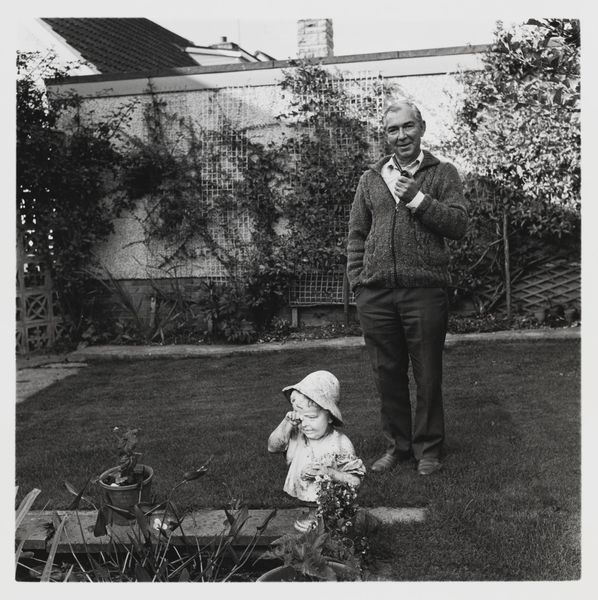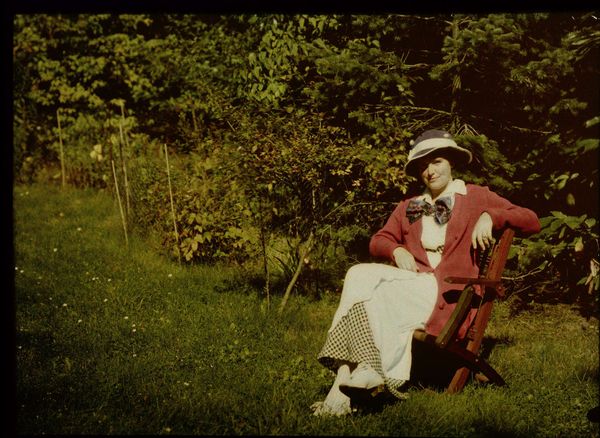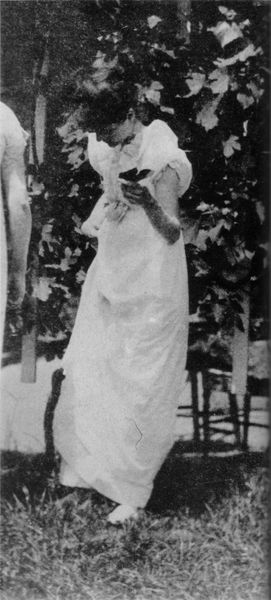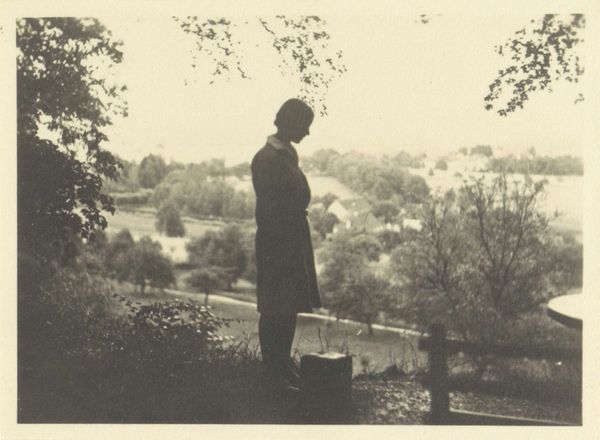
photography, gelatin-silver-print
#
portrait
#
landscape
#
black and white format
#
photography
#
gelatin-silver-print
#
monochrome photography
#
realism
#
monochrome
Dimensions: image: 15.2 × 19.9 cm (6 × 7 13/16 in.) sheet: 35.4 × 27.6 cm (13 15/16 × 10 7/8 in.)
Copyright: National Gallery of Art: CC0 1.0
Curator: We’re looking at Robert Adams' "Longmont, Colorado," a gelatin silver print created between 1982 and 1992. Editor: The high contrast gives this image an immediacy, almost like a snapshot, despite the careful composition. I'm struck by how domestic and yet distant it feels. It portrays such a small space, with just hints of surrounding landscapes. Curator: Adams, throughout his career, explored the impact of suburban sprawl on the American West. In his works, the figure within the landscape serves as a potent symbol. Here, a woman stands amid a garden—her posture seemingly relaxed, though also maybe concealing tensions? There is the presence of an accompanying canine nearby, resting alertly. The work has a strange stillness, one could say. Editor: It's true; the setting feels simultaneously intimate and surveilled. Consider the socio-political context of 1980s Colorado, rapidly transforming with new money and populations, especially with its white picket fence suburbs like Longmont. Curator: Symbolically, the woman anchored in the flowers in the foreground becomes very prominent. Flowers are universal signs of beauty, rebirth and fragility and, culturally, are also important components in acts and ceremonies to signify connection or support, but here there also seems to be a melancholy mood as well. Editor: The lack of a discernable expression combined with the title of the piece causes one to imagine her history in the place as a person. And then of course that is complicated by our own contemporary view point of Longmont now versus in the eighties. Curator: Exactly. While ostensibly realist, this photograph uses its setting and central figure to evoke deeper currents of change and loss tied to regional development, creating both connection and tension in our own modern memory. Editor: These subtle juxtapositions and contradictions challenge simplistic narratives of progress, demanding a critical re-evaluation. What’s preserved? What's lost? And for whom? These questions permeate our consideration.
Comments
No comments
Be the first to comment and join the conversation on the ultimate creative platform.
